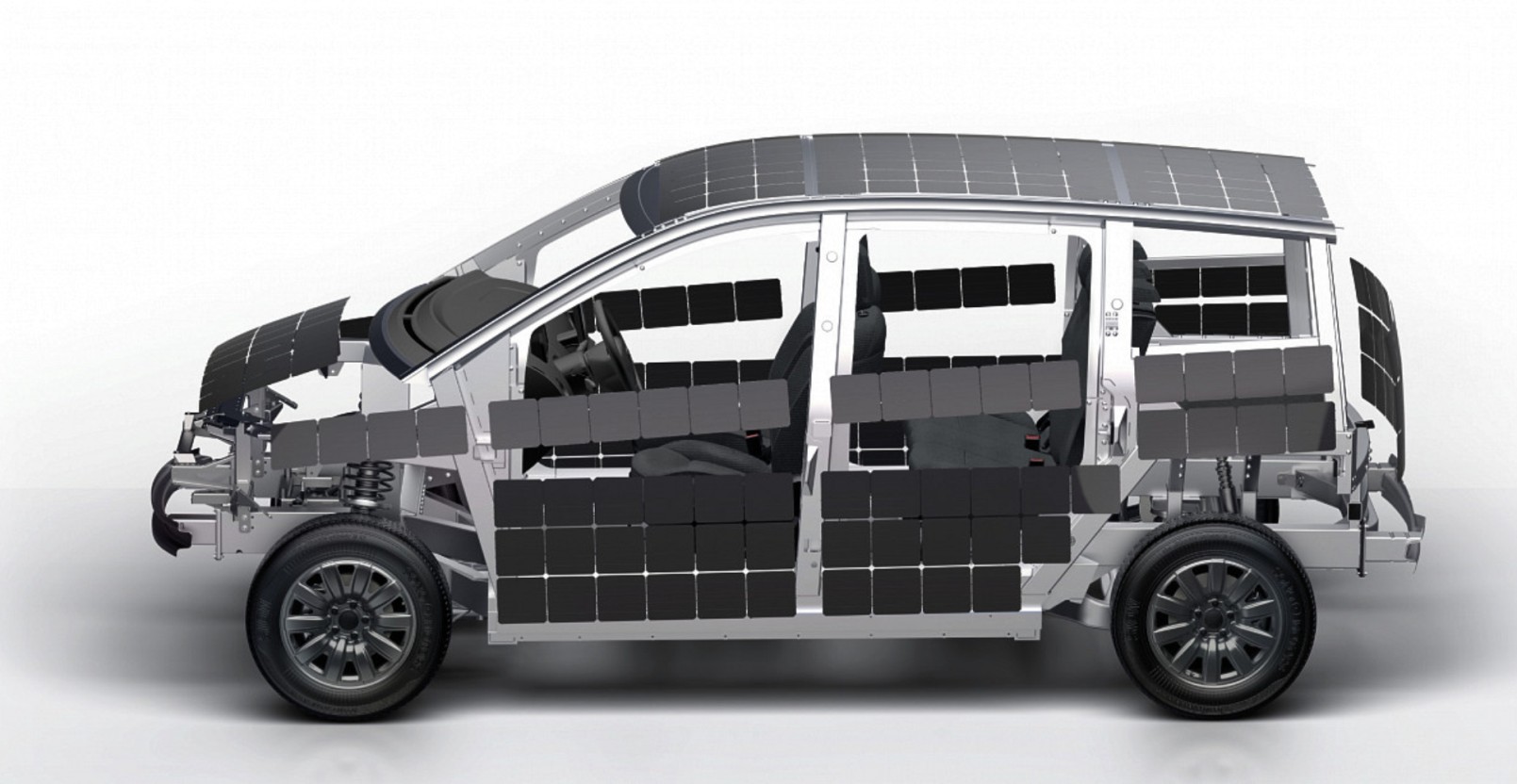Latest announcement on advances of solar powered electrical cars together with continuous improvement of supercapacitors are on right track for a good marriage aiming a common future.
IdTechEx report, “Solar Vehicles 2021-2041” notes that cars with solar bodywork have long range. Tough sell. Even longer range is being achieved by those crudely shoving in an enormous battery. The real significance is that Lightyear and Sono Motors cars with solar bodywork achieve range with half the battery and, for the gentle, never suffer a charging point. Consequently, solar adds space, reduces fire risk, reduces end-of-life disposal misery.
Hyundai is committed. Toyota researches solar making three times the electricity. For cars and for the robot shuttles that will replace them in some cities, supercapacitors will multiply these solar delights, being fast enough to compensate passing shadows, for example. Already, they propel factory automatic guided vehicles, easily charged frequently in seconds, where reliability and fit-and-forget gives payback.
Laurin Hahn, CEO & Co-Founder, Sono Motors, has shared some new details about the Sono Sion. In an interview with blog.crowddesk.de recently, Hahn said that the trial production of the Sono Sion solar car will begin in September 2021. Series production is scheduled to commence in 2022. Speaking to bloomberg.com recently, Hahn said that the Sono Sion will be available in only solar-cell black colour.

Thanks to a body made purely of solar panels, standing out in the crowd of electric cars or electric car startups won’t be a concern. The body of the Sono Sion has 248 solar cells integrated into it, making it the first car to do so as most solar-powered cars or solar-assisted cars have cells on the roof or the hood, case in point, the Lightyear One. In the Sion, the solar cells are placed all around the body so that some of the cells will always be in the direct path of the sunlight during the day. The Sion can run an additional 34 km per day (5800 km a year) with the help of solar cells.
The main source of power for the Sion is a 35 kWh battery pack that offers a range of up to 255 km (WLTP) in a single charge. Its front wheels are driven by a 120 kW/270 Nm electric motor and the car can reach 100 km/h in 9 seconds and a top speed of 140 km/h. The battery can be charged to full capacity in 13 hours with a 3.7 kW household charger and to 80 per cent in 30 minutes with a 50 kW DC fast charger. Other features of the Sion include 10-inch touchscreen infotainment system, front heated seats, ambient lighting, cruise control, driver, passenger & side airbags, rear parking assistance and more. Two years/100,000 km warranty comes standard.
Latest supercapacitors escape battery safety and disposal issues. They waste 1% of electricity not 15% for batteries. As “AGVs for humans”, robot shuttles trialling in 20 countries have billions of dollars of investment. Symmetrical, so no U turns, gated to go relatively slowly, space-efficient, they will enter malls, cross piazzas, use paths because they safely empower the disabled and the young.
Shuttles are not yet viable with supercapacitors despite deep discharge meaning less kWh needed, somewhat offsetting their larger size, and despite effectively infinite cycle life. Three steps get there – robotic fast charging like AGVs, solar bodywork meaning even less energy storage and the newly-selling 100 Wh/kg supercapacitors – up ten times.
Enjoy trouble-free, 30 year robot shuttles, city cars, city buses with rock bottom cost of ownership? Contrast most electric cars. They sell on up-front-price and range but consider the experimental French supercapacitor-dominant shuttle that also has a battery. Many supercapacitor researchers demonstrating even greater Wh/kg. Meanwhile, companies such as Lightyear selling solar bodywork capability could usefully offer leverage with supercapacitors long before the demonstrated supercapacitor car bodies become commercial and later integrated with solar bodywork.































